A mugs game? A blog about tea, by Vassili
There is nothing like a good mug of tea on board. But offering the other crew members some tea is not entirely straightforward. We are sailing close-hauled so everything is at an angle. Worse still the waves and swell are big and so the boat lurches around.
To start, you make your way down to the galley. Holding on with one hand, you then pick up the kettle with your other hand. With your third hand, you turn the tap on. Using the brief respite while the kettle boils you arrange a line of mugs and quietly remind yourself who is having what (some with, some without sugar, some without milk even, a roibush, a green tea and maybe a herbal tea to boot. When the kettle has boiled you have to get the hot water into each mug and not all over your foot. Imagine trying to fill an egg cup with a watering can: this requires the same level of dexterity.
Assuming success at this stage (not guaranteed by any means), the next part of the process is to get the tea on deck. You carry one mug of tea to the first companionway step, brace yourself, wait for the lurch, choose your moment and ascend one step. Then slowly carry on up the other remaining steps. Round the corner you are in sight of the cockpit. If you are lucky there will be someone seated outside to whom you can pass the first mug of tea. Repeat nine times.
You’d think the hard part is now over. Not so. Roger has noticed that when it is windy, the tea stays in the mug until, that is, you raise the mug to your lips to try and drink it. The turbulence of the wind around your head causes the tea to be blown out of the mug and onto your face thus creating a storm in a tea cup.
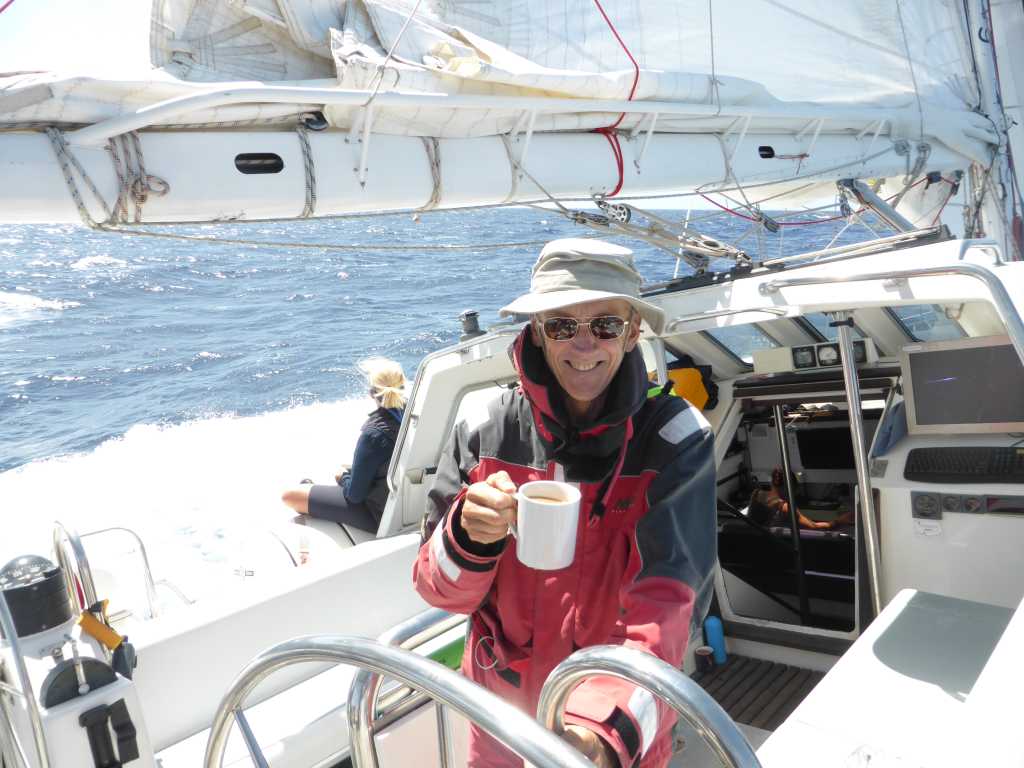
(No mugs of tea were spilled during the writing of the blog or the taking of the photograph)
Day 45 May 02
The wind dropped overnight and the white caps on the waves have disappeared. It is an ideal sea state in which to spot animals.
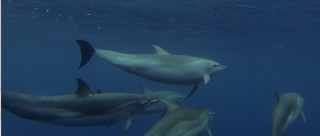
We saw a few dolphins early on today, then a whole school of them (30?) a while afterwards. Actually, they saw us really because they all swam towards us, swam around our bow for ten minutes, and continued along their way. We saw two whales blow about 300 metres away but they had dived by the time we reached them. More dolphins later passed our bow on the starboard but we didn’t motor over to them, they looked to be occupied in some task and were ignoring us. Then we saw two sei whales. We tracked them for some minutes but they proved elusive as well. They kept changing direction underwater so would pop up in unexpected places! Late in the afternoon we spotted a sperm whale. It has been a good day for megafauna (my new favourite word).

We did get close enough at one point to the whales to gather a sample of water from where they had been swimming. We squirt 500ml water through a filter on the end of a syringe to capture their DNA. These filters are then frozen and saved for future analysis.
We are officially out of the Tropics having reached latitude 26°N. The Tropic of Cancer is at 23.5°N and the Tropics are the area that extend from the Equator to the Tropic of Cancer. Today we are on the same latitude as the Canary Islands, a favourite of many English holidaymakers. It will take about a further five days for us to reach the Azores, our next landfall. The Azores is an established whale watching centre and we are hoping for good things. The air temperature has been dropping slowly as we make our way northwards. I used my duvet last night for the first time for many weeks. The sea temperature has also dropped from 28°C at the equator to 21°C here.
Now that the wind has dropped and we have started the engine life on board is easier. I can report that tea making is much easier now. Roger
Tais is also a student with a mission –
she is working on a thesis investigating the use of sail boats as a marine conservation tool? So what better place to continue her research than on board one of the few (possibly the only) purpose built sailing research vessel?
Since 7th April 2018, I have been part of the R/V Song of the Whales team on a research expedition from Salvador (Brazil) to Portugal. We have crossed the Atlantic and are now heading north to The Azores. This is a very long ocean passage (4400 nautical miles) in an area where there is very little information about whales and dolphins because few other vessels would take this route.
It is a wonderful experience to be part of this team. We are seeing lots of sea birds and cetaceans on the way including sperm whales, pilot whales and spinner dolphins and clymene dolphins.
Joining the R/V ‘Song of the Whale’ has being a great opportunity to gather more information for my research project at the Federal University of Bahia (Brazil). It is to look at the value of using sailboats for marine mammal conservation. For two years I have interviewed people that are active in marine science or conservation and joined different sailboats conducting marine conservation research. On the boat, I’m interviewing Claire Lacey, the skipper Niall MacAllister and Vassili Papastavrou.
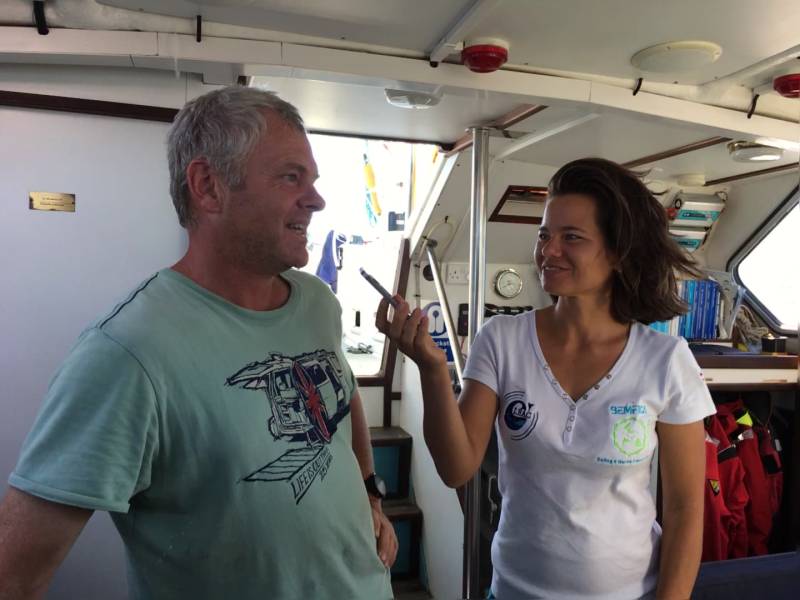
Claire was a scientist in the Song of the Whale team and now works for the Sea Mammal Research Unit in St. Andrews. Before joining SOTW, Niall worked closely with the Irish Whale & Dolphin Group, including skippering the boat they use for offshore surveys. Vassili was involved in the first study of sperm whales using sailing boats in the Indian Ocean.
I have found that sailboats are an excellent way to study whales and dolphins due to their eco-efficiency. Wind is clean and free, the boat can travel long distances with lower costs and low impact (low noise, consumption and emission of polluting gases).
Sailboats can contribute to marine conservation because they are quiet and allow the collection of scientific data without interference of excessive engine noise, especially when collecting acoustic data. They bring participants closer to the marine environment, and allow ecotourism and environmental education with low impact.
Once my thesis is finished, I want to make sure that decision makers in Brazil are aware of my conclusions and support the use of sail boats for marine research. Bons ventos!
Day 47 May 04
There is one desk in the cabin that is dedicated to navigation. There is an old fashioned paper chart on the desk. It may be old fashioned but it has the wonderful merit of not being dependent on electricity. There are three means of generating electricity on the boat – the generator that functions when the main engine is running, a supplementary small generator that works independently of the engine and two windmills sited on the top of the A-frame. We have a big bank of batteries that are kept charged at all times.
To work with the paper chart there is also a sextant and with this manual device you can work out your position on the chart. The trouble is the tables for calculating the position from a sextant reading are kept on a computer so we are dependent on electricity for that.
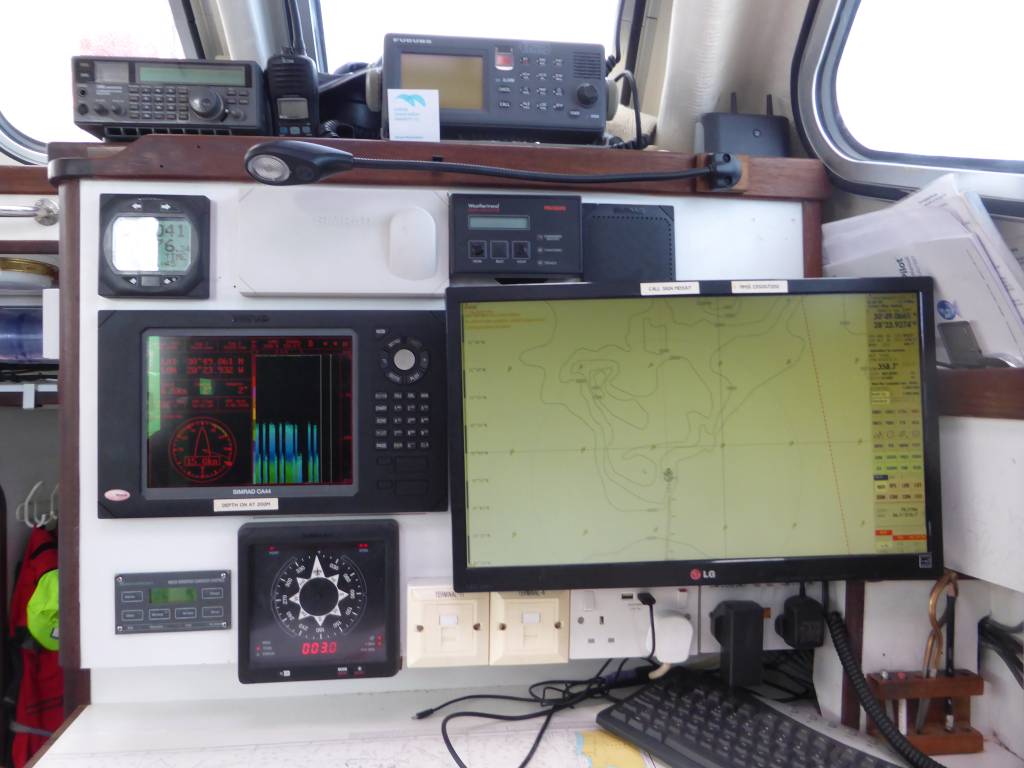
In addition to all this there are two separate hand held GPS devices that work on normal AA batteries and a satellite phone that will give GPS position that also can work on batteries. It is good to have a few backup systems. You really do need to know where you are when at sea.
The main system for navigation is the dedicated computer system that displays a chart of the sea on the screen as well as the position of the boat on the chart. This is connected to the AIS system (Automatic Identification System) which is used by most boats of any size and certainly commercial shipping. These other vessels are displayed on the navigation screen along with the information that tells you how fast they are travelling, what course they are moving on and most importantly, whether we will crash into them! Very handy when the horizon is only about 5 miles away and the closing speed of us and a commercial vessel might be as much as 20 knots. That means we only have 15 minutes to avoid them once we can see them.
The instruments on the navigation desk show our position in latitude and longitude, our speed through the water, our speed over the ground, the true wind speed, the apparent wind speed, the true wind direction, the apparent wind direction, the temperature of the water, the depth of the water, the course we are steering, our actual course over the ground, the state of the main batteries, the barometric pressure and whether it is rising or falling and also the time. There is lots of information to absorb. The forecast of wind speeds for the next three days is on a separate computer.
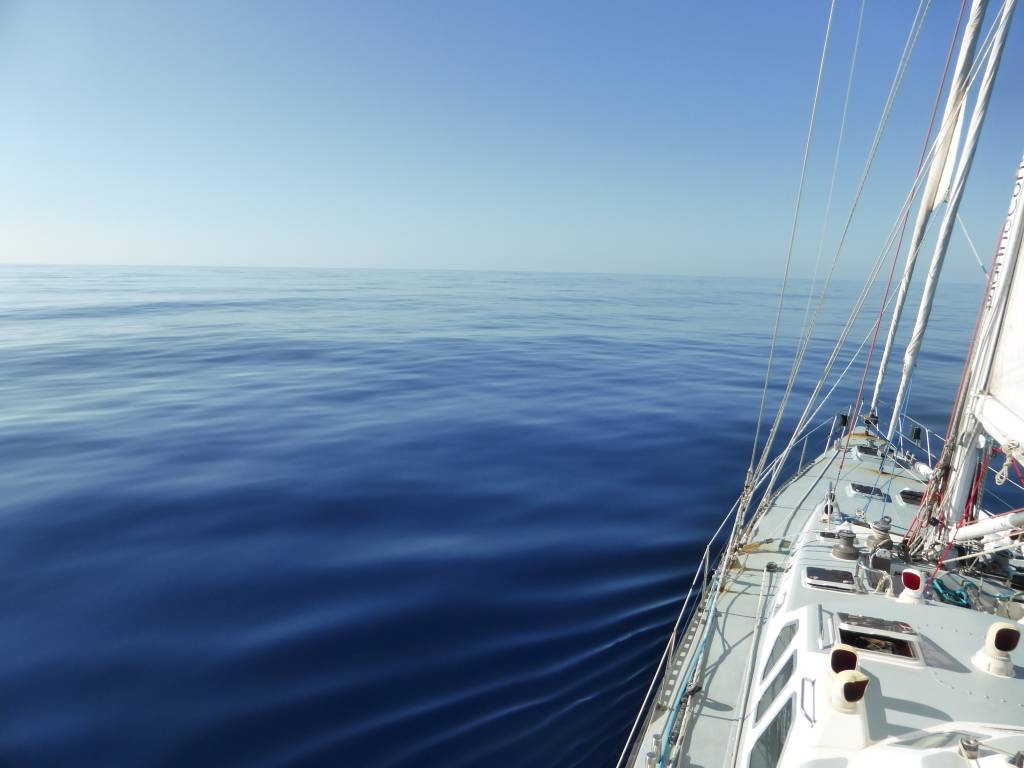
Day 48 May 05
The winds are slowly dying as we get closer to the Azores and the high pressure area that is there. Despite the calmer seas we have not seen any dolphins or whales either yesterday or today apart from a few moments after dinner last night when we noticed some dolphins around the bow. It was pitch black, the moon had not yet risen, we could not see very much of them.
Without ropes, sails do not work. There are eleven different ones that are in the cockpit along with five winches. The two foresails can be reefed or completely furled without going up on deck. All three sails can be hauled in or let out without going up on deck.
Going up on deck there are a further seventeen ropes around the mast with a further four winches. As you can see from the photo it does get a bit confusing! Fortunately, nowadays ropes come in different colours and different patterns. It helps enormously to distinguish one from another. In the old days on sailing ships the ropes were all the same colour and there were a lot more of them. It must have been quite a nightmare.

The sun had a halo around it today. I am not sure if this is a sign of anything or not. Whatever portent it promises we will probably be having pasta for dinner again. I like pasta. No matter what is cooked for dinner it all gets eaten, either at the time or by those on watch overnight or at lunch the following day. It is a joy to cook for such voracious appetites.
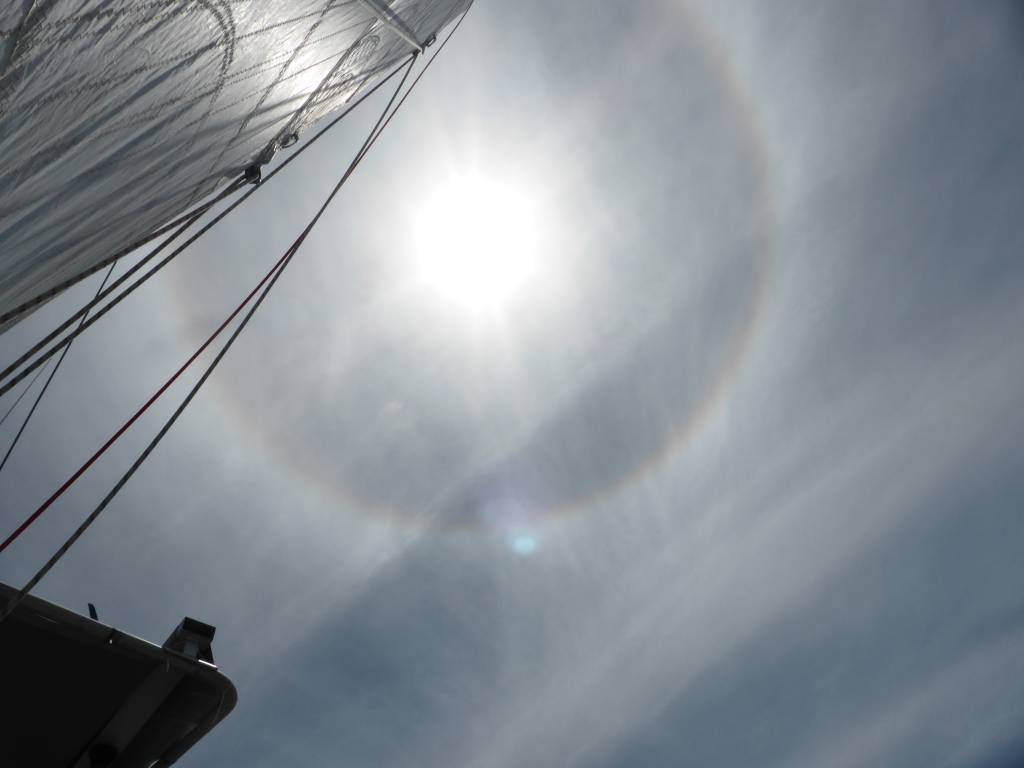
Day 49 May 06
The wind remained light and we continued motoring towards our landfall in the Azores. This morning we spotted a killer whale, or orca. It was just a single whale swimming slowly but in no particular direction. It kept diving and then appearing where we least expected it. After half an hour we continued on our course.
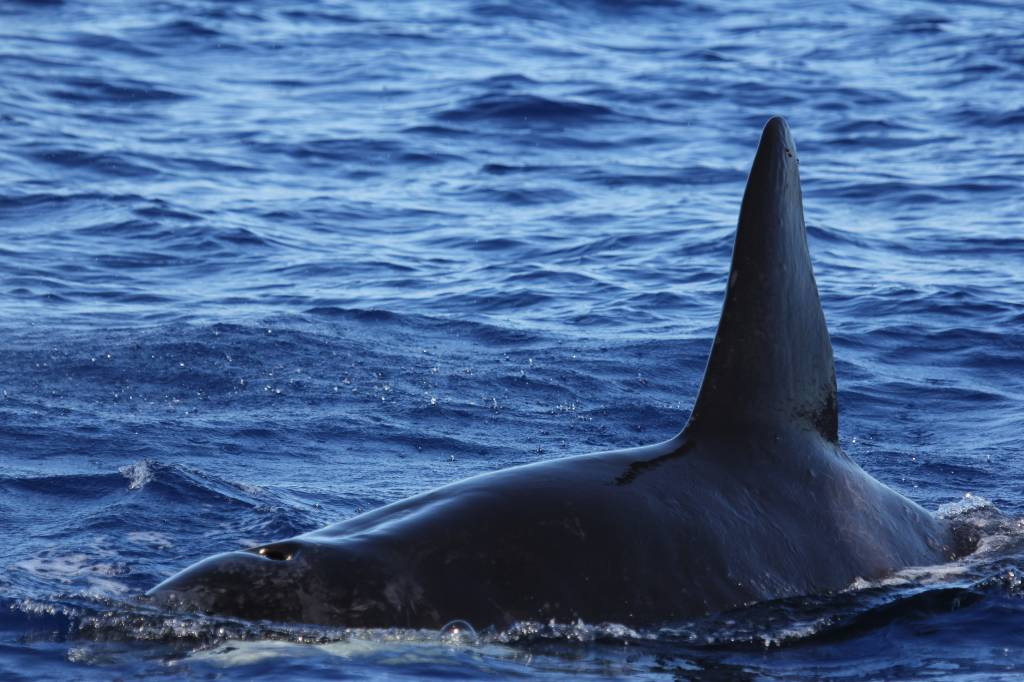
Despite the sea becoming calmer and thus making it so much easier to spot any animals on the surface we didn’t see anything for the rest of the day.
Calm seas also make it easier to spot rubbish and we saw a couple of dozen bits of plastic over the day, mainly white. Vasilli saw a shoe floating in the water. We stopped to pick up a mooring buoy that floated past. When we had got it on deck we found the underside covered in goose barnacles. I don’t know how long they had been growing on the buoy but it must be for over a year.
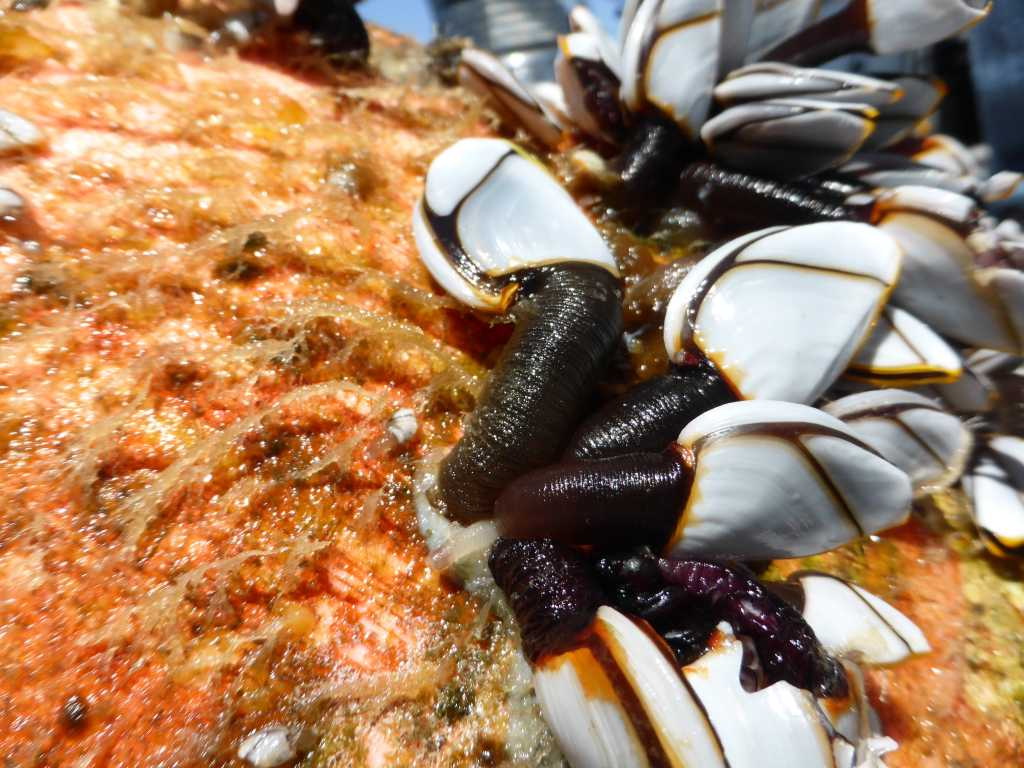
Late in the afternoon the wind dropped to only two knots and the sea became very glassy and smooth. It looked very odd. We are so used to waves and wind. The sunset coloured the sea with orange.
The cook this evening has used up every last fresh vegetable. There are no onions left, no eggs, and we are down to dried milk, tinned stuff but there is enough pasta to last till autumn! I am hoping we reach port in time for tomorrow’s dinner.
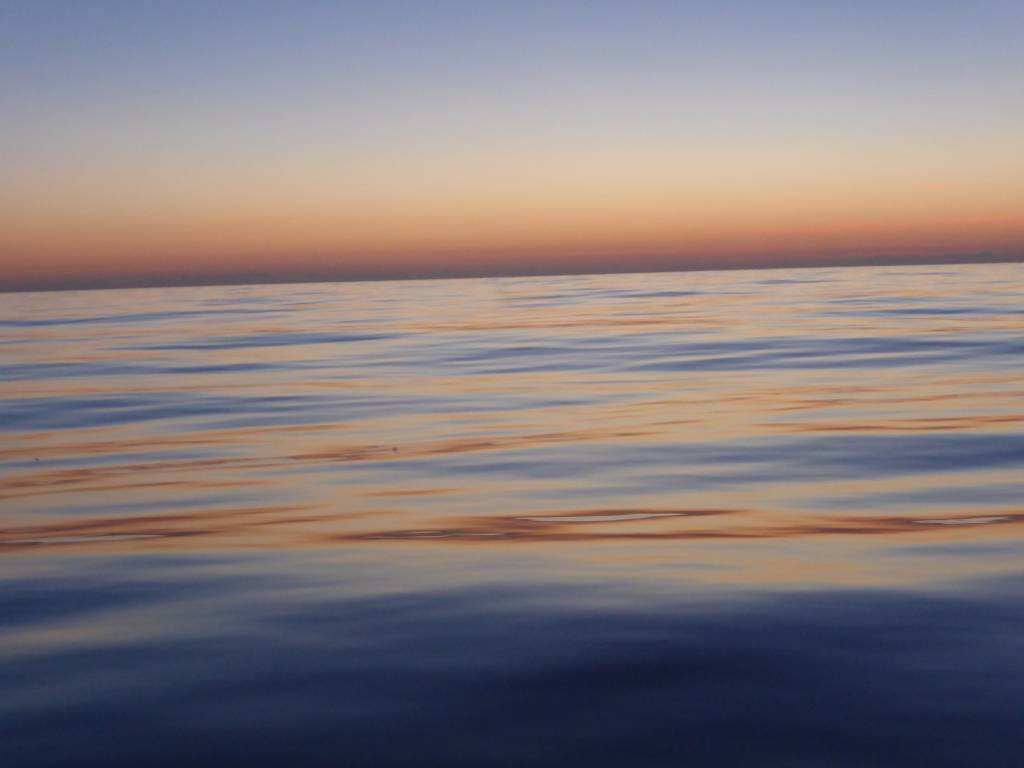
By Roger
Sorry, comments are closed for this post.